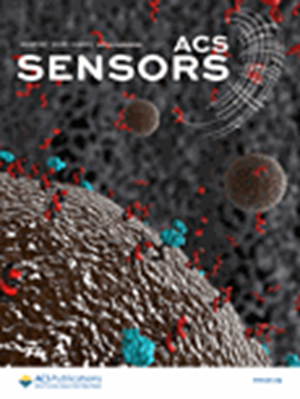Light-Stable, Ultrastretchable Wearable Strain Sensors for Versatile Plant Growth Monitoring
IF 8.2
1区 化学
Q1 CHEMISTRY, ANALYTICAL
引用次数: 0
Abstract
Wearable electronics have been applied to plants for various applications, including microclimate detection, health diagnosis, and growth rate measurement. However, previously reported plant growth strain sensors have limitations in the strain sensing range, optical transparency, and uncertain stability and reproducibility. Our recent work reported a transparent, conjugated polymer-based strain sensor that achieved above 400% operating strain in measurements of growth in a grass. In this work, we develop second-generation plant strain sensors to broaden their application scope in plant growth monitoring by (1) imparting photostability through device engineering and (2) boosting stretchability through direct ink writing. We first fabricate a strain sensor using room-temperature-cured Au–C–Al electrodes, which drastically improve sensor stability under direct light illumination. The sensors are successfully applied to leaves and stems of tomatoes as well as cotyledons and fruits of cucumbers to track the elongation or radial growth rate in day/night cycles. Notably, the cucumber cotyledon is so far the youngest plant organ (3 days after germination) on which a strain sensor has been used for growth monitoring. Moreover, we attain a significantly improved strain sensing range by patterning and encapsulating strain sensors using direct ink writing. An “elastic rope” model is proposed, which revealed that the shape and contour length of patterned sensors jointly determine the strain sensing range along with the intrinsic stretchability of the material. The most stretchable long-horseshoe pattern reaches a maximum apparent operating nominal strain of 1000% tested on grass leaves, a new record in strain sensors applied to plant growth monitoring.

光稳定,超伸缩可穿戴应变传感器,用于多功能植物生长监测
可穿戴电子设备已经应用于植物的各种应用,包括微气候检测、健康诊断和生长速度测量。然而,以往报道的植物生长应变传感器在应变传感范围、光学透明度、稳定性和可重复性等方面存在局限性。我们最近的工作报告了一种透明的,共轭聚合物基应变传感器,在测量草的生长时达到了400%以上的工作应变。在这项工作中,我们开发了第二代植物应变传感器,通过(1)通过设备工程赋予光稳定性和(2)通过直接墨水书写提高拉伸性来扩大其在植物生长监测中的应用范围。我们首先使用室温固化的Au-C-Al电极制造应变传感器,这大大提高了传感器在直接光照下的稳定性。该传感器已成功应用于番茄的叶片和茎,以及黄瓜的子叶和果实,以跟踪昼夜循环的伸长或径向生长速率。值得注意的是,黄瓜子叶是迄今为止最年轻的植物器官(发芽后3天),应变传感器已被用于生长监测。此外,我们通过使用直接墨水书写的模式和封装应变传感器,获得了显著改善的应变传感范围。提出了一种“弹性绳”模型,该模型揭示了图案传感器的形状和轮廓长度与材料的固有拉伸性共同决定了应变传感范围。最具延展性的长马蹄形图案在草叶上测试达到最大表观操作标称应变1000%,这是应用于植物生长监测的应变传感器的新记录。
本文章由计算机程序翻译,如有差异,请以英文原文为准。
求助全文
约1分钟内获得全文
求助全文
来源期刊

ACS Sensors
Chemical Engineering-Bioengineering
CiteScore
14.50
自引率
3.40%
发文量
372
期刊介绍:
ACS Sensors is a peer-reviewed research journal that focuses on the dissemination of new and original knowledge in the field of sensor science, particularly those that selectively sense chemical or biological species or processes. The journal covers a broad range of topics, including but not limited to biosensors, chemical sensors, gas sensors, intracellular sensors, single molecule sensors, cell chips, and microfluidic devices. It aims to publish articles that address conceptual advances in sensing technology applicable to various types of analytes or application papers that report on the use of existing sensing concepts in new ways or for new analytes.
 求助内容:
求助内容: 应助结果提醒方式:
应助结果提醒方式:


